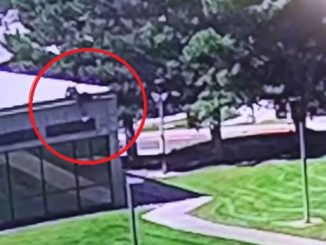
Published September 9, 2025
The Crime
On July 22, 1995, 15-year-old Elyse Pahler was lured from her home in Arroyo Grande, California, by three classmates—Jacob Delashmutt, Royce Casey, and Joseph Fiorella—on the pretense of smoking marijuana. Instead, they took her to a remote eucalyptus grove, where the brutal murder unfolded as a so-called “satanic ritual.” Delashmutt strangled Elyse with a belt, Fiorella and Casey stabbed her multiple times, and Casey stomped on her neck. The trio believed that sacrificing a virgin to Satan would enhance their death-metal musical abilities.
The crime made headlines not just for its cruelty, but also for its bizarre motives tied to death-metal culture and occult symbolism.
Criminal Proceedings & Sentencing
All three teens were convicted of first-degree murder in the late 1990s:
-
Royce Casey and Jacob Delashmutt received 25 years to life.
-
Joseph Fiorella received 26 years to life.
The family even sued the metal band Slayer, arguing their lyrics incited the crime—but the lawsuit was dismissed on First Amendment grounds.
A Parole Saga: Denials, Reversals, and Release
Casey and Delashmutt
-
After decades of parole board hearings, both Casey and Delashmutt were granted parole in 2023, but California Governor Gavin Newsom intervened and reversed those decisions. His objections focused on their need to better reflect on their internal motivations and readiness to reintegrate into society.
-
This year (2025), however, both men were finally released:
-
Jacob Delashmutt was released in late July.
-
Royce Casey followed in early August, moving into transitional housing.
-
Delashmutt poignantly accepted responsibility at his hearing, calling himself the “ringleader,” while Casey—who initially turned himself in—expressed remorse and recalled how Elyse’s father brought her photograph to every hearing.
Fiorella
Fiorella, the youngest, remains incarcerated. His legal team has raised concerns about his intellectual disability (noting an IQ around 68) and poor representation during the original plea deal. He did not participate in his last hearing (2023) and isn’t scheduled for another until June 2026.
Broader Context & Reflection
-
The murder captured national attention amid the so-called “satanic panic” era of the 1990s. It even inspired the 2009 film Jennifer’s Body, written by Diablo Cody.
-
A six-part true-crime series, A Killer Among Friends, hosted by Jennifer Love Hewitt, now revisits the case with new interviews and insights.
👥 Public/Political Reactions
Local Officials & District Attorney
-
District Attorney Dan Dow of San Luis Obispo County responded with strong disapproval. He described the crime as “horrific,” “sadistic,” and “planned,” and voiced that no amount of prison time could fully repay the victims or community. He emphasized that parole hearings often overlook the severity of the crime, focusing instead on rehabilitation efforts behind bars.
-
After the decision to release both men, Dow called the outcome “really disheartening,” underscoring the enduring community trauma.
The Pahler Family
-
David Pahler, Elyse’s father, has been a frequent presence at parole hearings—attending at least 11 over the years. As of March 2025, he declared that he would no longer attend future hearings, stating, “I know exactly how this is going to turn out.”
-
Tired of the system, he proposed key reforms to the parole hearing process:
-
Require inmates to promise to tell the truth.
-
Demand genuine remorse.
-
Ensure a photo of the victim is present during hearings.
-
Provide victim closure, something he personally feels he never received.
-
These proposals are aimed at making the system more trauma-aware and centered around the survivor community.KSBY News
Defense Perspective
-
Charles Carbone, attorney for Royce Casey, argued that the parole decision reflects substantial personal rehabilitation. He said:
“I believe that justice has been served by Mr. Casey being incarcerated for 30-plus years and by Mr. Casey doing that arduous, necessary work of rehabilitation.”
Carbone emphasized that the legal system should weigh rehabilitation alongside punishment.
Broader Context & Community Impact
-
Local media coverage underscores how this case continues to resonate throughout the Central Coast region—not just as a legal matter, but as a symbol of unresolved grief and justice.
-
Coverage from the San Luis Obispo Tribune labeled the murders “heinous” and noted that the three perpetrators were chosen because they perceived Elyse as a “perfect sacrifice.”
-
The broader public conversation echoes concerns about the emotional toll on victims’ families and the need for more meaningful trauma-informed practices in parole proceedings.
⚠️ Resulting Effects
1. On Elyse Pahler’s Family
-
Enduring Trauma: Her parents and siblings continue to carry the weight of a crime that’s now three decades old. The repeated parole hearings forced them to relive the details.
-
Shift in Participation: After years of attending, David Pahler (her father) announced he would no longer attend future hearings, reflecting exhaustion and disillusionment with the system.
-
Push for Reform: The family’s calls for reform—like requiring truthfulness, mandatory remorse, and visible victim photos during hearings—may influence future California parole board practices.
2. On the Perpetrators
-
Royce Casey & Jacob Delashmutt are now free but under strict parole supervision, including transitional housing and monitoring. Reintegration will be gradual and scrutinized, with little chance of anonymity given the crime’s notoriety.
-
Joseph Fiorella remains incarcerated, with his next hearing scheduled for 2026. His case could test how California weighs intellectual disability claims in parole eligibility.
3. On the Justice & Parole System
-
Governor’s Role Diminished: Governor Newsom previously blocked their release, but the parole system ultimately allowed them out. This highlights the limits of executive power in long-term incarceration cases.
-
Rehabilitation vs. Retribution Debate: The case has reignited the public policy debate—should rehabilitation after decades outweigh the original brutality? Critics say the board discounts the permanent harm done to victims and communities.
-
Legal Precedent: The 1990s lawsuit against Slayer (though dismissed) set boundaries for artistic free speech, reaffirming that violent lyrics can’t legally be tied to crimes.
4. On the Community
-
Arroyo Grande remains marked by Elyse’s murder. Community members expressed fear and unease about the parolees returning to society.
-
The case is often remembered in Central Coast schools and community forums as a cautionary tale about youth culture, music influences, and peer manipulation.
5. On Culture & Media
-
Film Influence: The murder inspired Jennifer’s Body (2009), turning Elyse’s tragedy into pop culture.
-
True Crime Surge: The story continues to fuel true-crime documentaries and podcasts, including A Killer Among Friends, hosted by Jennifer Love Hewitt.
-
Public Memory: Even decades later, it remains tied to the 1990s “satanic panic,” shaping how people remember that moral climate.
6. Political & Public Effects
-
The District Attorney’s outspoken criticism could influence upcoming California policy debates on parole reform.
-
Victims’ advocacy groups may use this case to press lawmakers for victim-centered reforms, like longer gaps between hearings or new criteria for denying parole.
-
The case is now a touchstone in arguments about whether California is too lenient with violent offenders after decades of incarceration.
🔮 Future Outlook
1. For the Parolees
-
Tight Supervision: Royce Casey and Jacob Delashmutt will live under parole conditions for years, including restrictions on movement, employment, and association. Any violation could land them back in prison.
-
Reintegration Challenges: Because of the case’s notoriety, they are unlikely to fade into anonymity. Public awareness and media coverage will continue to shadow them, making employment and social reintegration difficult.
2. For Joseph Fiorella
-
His 2026 parole hearing will likely attract significant attention, especially since his defense is raising issues of intellectual disability and ineffective legal counsel.
-
If parole is denied, he may remain incarcerated well beyond his minimum sentence. If granted, his release could reopen the debate about whether rehabilitation justifies freeing all three.
3. For the Pahler Family
-
Their advocacy for parole reform may gain traction. Lawmakers in California could propose legislation requiring:
-
Longer gaps between hearings (to reduce retraumatization).
-
Mandatory victim impact visuals (like displaying the victim’s photo at every hearing).
-
Higher standards for demonstrating remorse before parole.
-
-
The family may also become more involved in victims’ rights groups, turning personal tragedy into systemic advocacy.
4. For the Justice System
-
Policy Debates: This case may be cited in California’s broader debates about criminal justice reform, parole practices, and balancing rehabilitation with public safety.
-
Governor’s Limits: After Newsom’s blocked reversals, lawmakers might reassess how much influence governors should have in parole decisions.
-
National Ripple Effect: Other states could watch closely, especially as “satanic panic” crimes are reevaluated in the context of modern parole laws.
5. For Culture & Society
-
Renewed True Crime Interest: The case will remain a reference point in documentaries, podcasts, and news retrospectives—keeping Elyse’s story alive for new generations.
-
Pop Culture Legacy: With Jennifer’s Body gaining cult status and new docuseries emerging, Elyse’s story is cemented as part of America’s broader cultural memory of the 1990s.
-
Community Dialogue: In Arroyo Grande and beyond, the murder continues to serve as a lesson in the dangers of peer influence, obsession with dark subcultures, and youth vulnerability.
🧩 Bottom Line:
The release of two men who butchered a 15-year-old girl in the name of Satanism is more than a tragic reminder of the past — it’s a warning about today’s justice system. Thirty years behind bars will never erase what Elyse Pahler suffered, and yet California’s parole board chose to give her killers another chance while her family lives with a permanent loss.
Critics argue this is the inevitable result of soft-on-crime policies that prioritize “rehabilitation” over accountability. When governors’ hands are tied, when parole boards lean toward leniency, and when victims’ families are left exhausted and voiceless, public safety takes a back seat to political ideology.
For communities across America, the lesson is clear: if the system can set free men who carried out a ritualistic, sadistic killing, then it can fail in other cases too. Justice must never forget the victim — and true justice means consequences that match the crime. Anything less is not compassion, but negligence.
SOURCES: THE GATEWAY PUNDIT – Two Men Who Murdered Teen in ‘Satanic Ritual’ Granted Parole, Were Found Guilty After ‘Sacrificing’ a Virgin
THE TRIBUNE – 2 killers in satanic murder of SLO County teen are released from prison
WESTERN JOURNAL – Illegal Deported by Trump Now Accused of Planning Satanic ‘Execution of Children’ at Lady Gaga Concert





Be the first to comment